This Arrow Video “Limited Edition” Blu-ray is currently available for purchase. A 4K Ultra HD “Limited Edition” will be available next week.
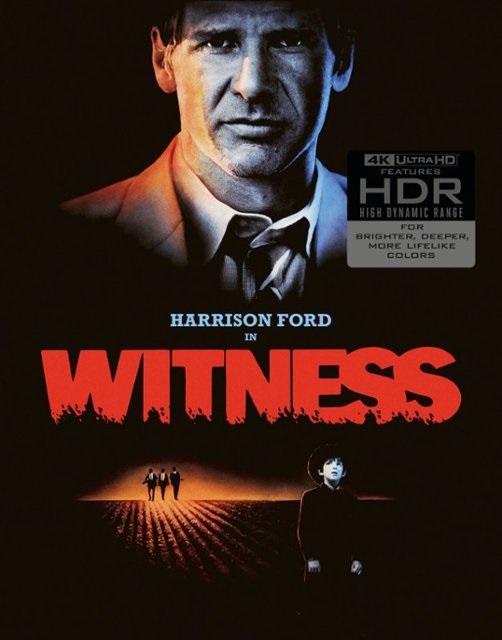
As a child, I was taken to the movies every week by my parents. Often, I went in cold, not knowing anything about what I was about to see. One of the films I distinctly remember watching was Witness. Star Harrison Ford was familiar to me from the Star Wars and Indiana Jones franchises, but this picture immediately struck me as being different. It was a smaller, more serious effort set mostly on a picturesque farm among the Amish community of Pennsylvania. Despite being, well, quiet and different tonally from his other works, it was incredibly compelling to me, even as a child (this may have also had something to do with the fact that a young person was featured prominently in the story). In fact, if memory serves the entire audience seemed completely engaged in the story and the events unfolding onscreen.
In general, the film managed to impress both critics and audiences, eventually earning Oscar nominations and winning two trophies (for Best Original Screenplay and Best Editing). Now, Arrow Video has given the movie a spiffy upgrade. The new transfer and picture look spotless on both the 4K Ultra HD release and the Blu-ray edition. Both also come with the exceptional bonuses from the previous 20th anniversary DVD, along with a new and compelling film historian commentary track.
For those who haven’t seen the picture, the story begins when Amish widow Rachel (Kelly McGillis) decides to take a trip with her son Samuel (Lukas Haas) from Lancaster, Pennsylvania to Philadelphia to visit relatives. While stopping in the restroom, the young boy witnesses the murder of an undercover cop by two fellow officers. Detective John Book (Harrison Ford) and partner Elton Carver (Brent Jennings) arrive on the scene to conduct the investigation. It quickly becomes clear that fellow officers were involved in the slaying. The bad guys target witness Samuel and after trying to get the mother and son to safety, Book is wounded. The group return to Lancaster, where the hero recovers and hides out, immersing himself in Amish culture. As an attraction forms between himself and Rachel, the villains slowly close in.
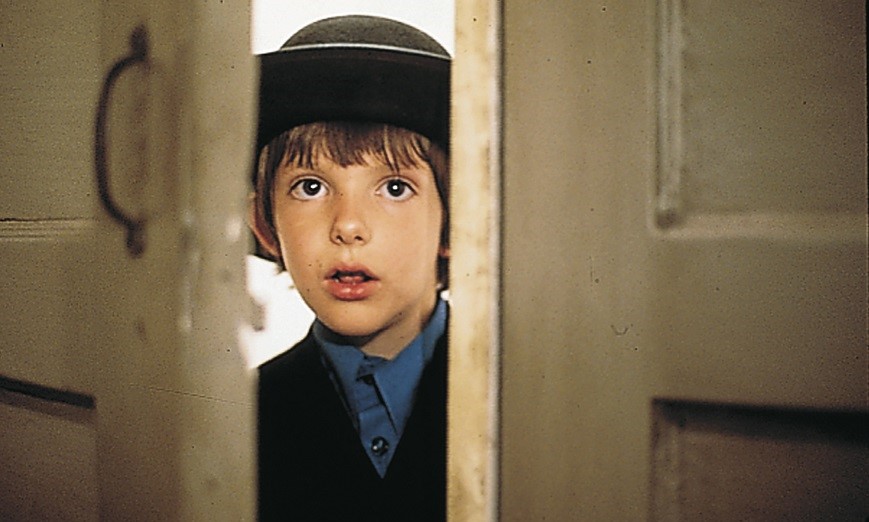
The movie is sharply written and features gorgeous photography of the Pennsylvania countryside and its Amish community. But another major highlight is the exceptional cast. This was an early dramatic turn for Ford and he takes full advantage of it, emphasizing his character’s inner turmoil as he attempts to adapt to a completely rural and technology free world. Ford’s lead must also act as a surrogate father/protector to Samuel and struggle with his feelings towards Rachel. Both he and the widow seem aware that any sort of relationship would be doomed, and their attraction leading to a great deal of romantic tension.
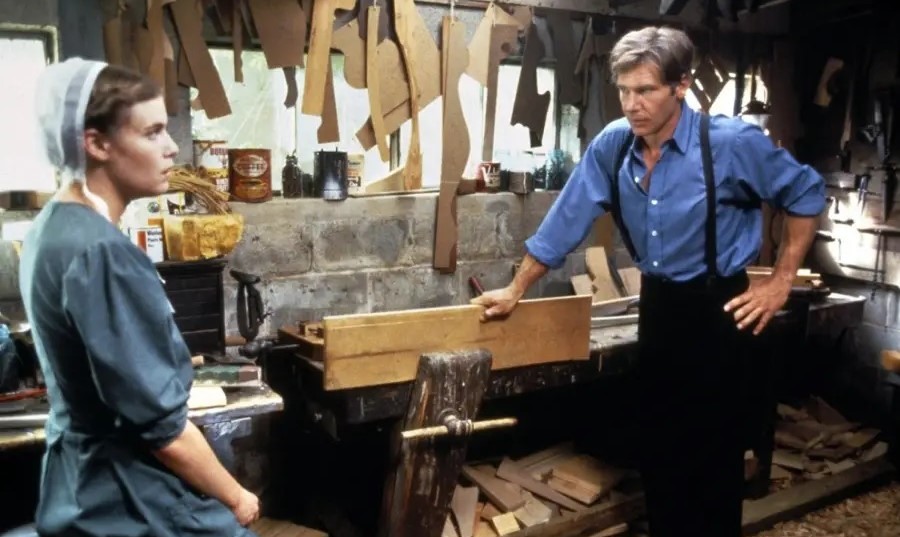
Amazingly, all of these issues are conveyed largely through the eyes of the characters, rather than direct discussion. Today, we rarely see films that don’t explicitly state their themes out loud in dialogue. It’s wonderful to see a story told so perfectly through glances and looks between the cast. And because we care so much about these characters, when the action does arrive it is incredibly tense, not to mention uniquely captured (this includes the way in which a couple of the persons meet their sudden end).
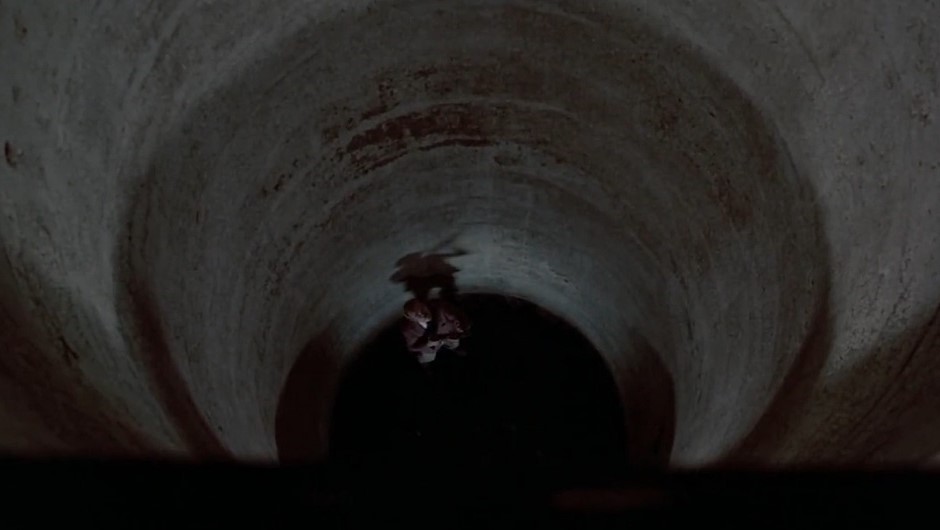
Witness is a superb film and one that holds up remarkably well after nearly 40 years. The film’s subject is sensitively handled and doesn’t exploit or make fun of the Amish community. A great deal of the credit for its success should go to Australian director Peter Weir. Having earlier come off the arthouse classic Picnic at Hanging Rock and the award-winning political thriller The Year of Living Dangerously, his take on the screenplay is virtually perfect. According to reports, Weir found the script overwritten and chopped out pages of conversation to focus on the performers and their contemplative reactions to events, rather than using blunt techniques. This method works wonders and helps the movie stand out among its contemporaries.
As mentioned, the 4K image quality is remarkable. The film has never looked this clean before. The lighting is painterly at times and the presentation presents a lot of natural light through windows and candles being used, all to accurately convey the simple Amish lifestyle.
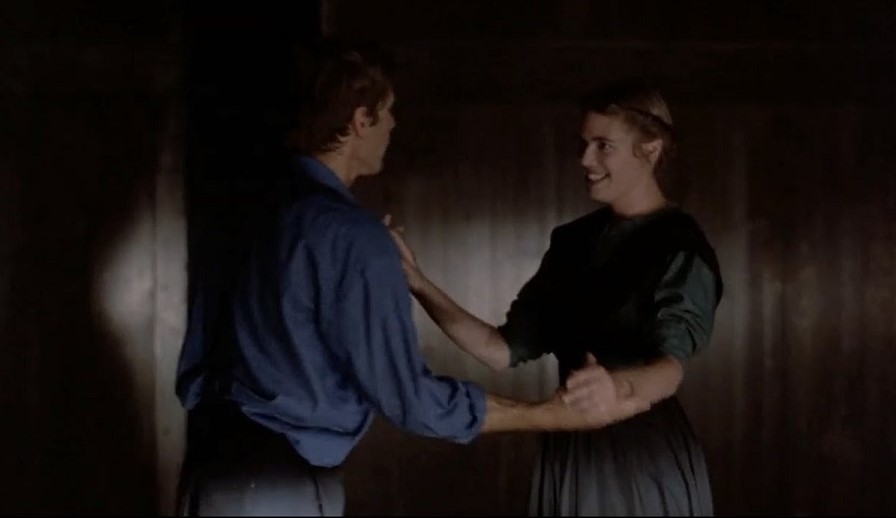
Additionally, the extras included are amazing. There’s an excellent visual essay feature that goes into Weir’s use of performance to convey meaning and emotion. Critic Staci Layne Wilson does an excellent job of showing examples of silence being used to maximum effect and praising the film and its performances as stronger than the movies that ended up taking home Academy Awards.
There’s an excellent new interview with Australian cinematographer John Seale who shares his memories of working on the project. This was both he and Weir’s first American film and he details his nervousness at the beginning of the shoot. He notes how the director allayed his fears by telling him that it was still an Australian movie, just that the cast and crew just happened to have funny accents.
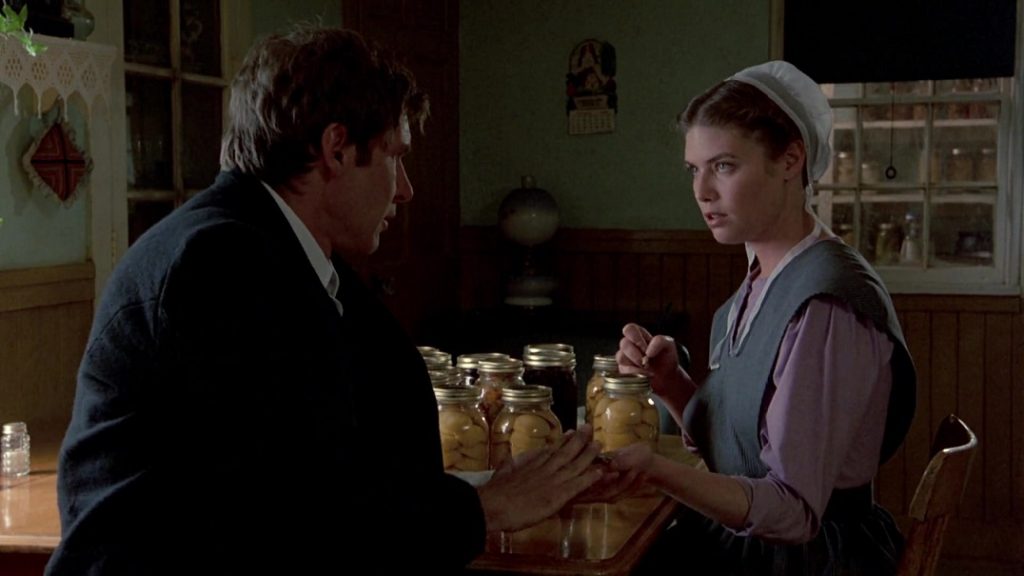
Additionally, there is also an archived interview with Weir himself who talks about his filmmaking process. This and the hour-long five-part archival documentary (that appeared on the 2004 DVD) are wonderful. The doc includes Weir telling an interesting history of his involvement in the movie. As he explains, he was readying production on The Mosquito Coast when financing fell through and Weir decided to take director-for-hire work. After signing on, he had only 8 weeks to rework the script, cast supporting roles and scout locations (a director’s strike was looming in Hollywood at the time and the producer’s needed him to start shooting as soon as possible).There are plenty of wonderful tales from all involved, including supporting cast members like Viggo Mortensen (this picture marked his first onscreen role). It’s full of incredible tidbits and memories about the shoot.
The new film historian commentary track adds even more details about the movie and its long journey to the screen. Apparently, the concept started as a TV movie script in the early 1970s and was later rewritten as TV episodes for established television shows before being written up as a feature. The first version had a reversed scenario, focusing on an Amish man leaving Lancaster to live in a Philadelphia tenement, encountering unusual neighbors and crime in the city. He details how scared the studio was by Weir’s attempts to eliminate exposition (particularly during the denouement with Book and Rachel). That is, at least until they saw the finished film. Curiously, the film didn’t have a title for the longest time and the unknown studio employee who suggested Witness earned themselves $400 dollars. He also describes the unusual release pattern (it opened in the normally quiet month of February) as well as the response to the film critically and commercially.
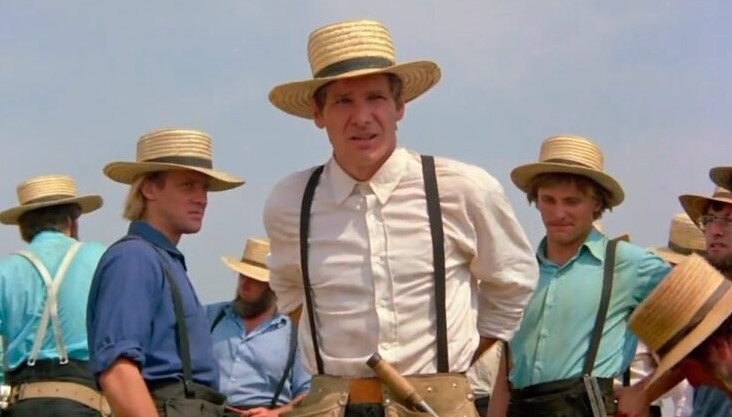
Additionally, there’s an archived interview with Harrison Ford from 1985 in which he shares his enthusiasm for the project while enduring unnecessary questions about upcoming higher-profile pictures and the box office failure of Blade Runner. There is also an interesting deleted scene that was included in the TV broadcast version, EPK featurettes and plenty of publicity materials. And the “Limited Editions” come with a 60-page booklet with more writing and essays on the film, as well as a fold-out double-sided poster with newly commissioned and original art for the film.
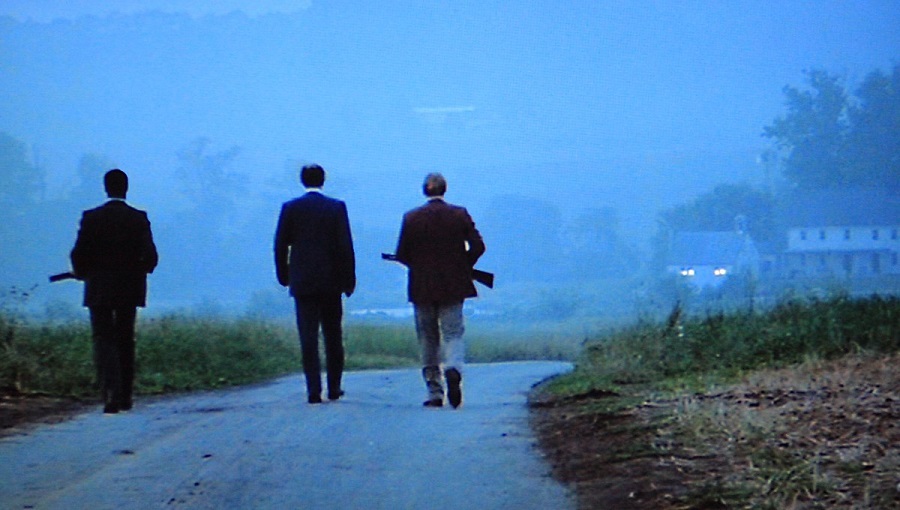
Witness is a wonderful film that hasn’t lost its vitality over the years and Arrow Video’s 4K Ultra HD and Blu-ray releases of the film are exceptional. You really can’t go wrong with this title or either “Limited Edition” disc. It is every bit as strong as it was when I first viewed it. This title is among the best of the decade and is worth anyone’s attention.


